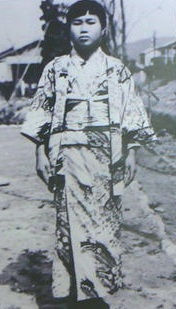
Tsuru the legend ( Tsuru a lenda)
THE LEGEND AND HISTORY OF THE THOUSAND TSURUS Tsuru is a sacred bird from Japan. It is the symbol of health, good luck, happiness, longevity and fortune.
Japanese legend tells that the tsuru can live up to a thousand years. It is considered the companion bird of the hermits who took refuge in the mountains to meditate, believing they have supernatural powers to keep from aging. The legend also says that if the person makes 1000 tsurus, using the technique of origami - secular art of folding paper, with the thought turned to a wish, it can be realized. Initially the origami of the tsuru had only decorative function, it was used to decorate the children's room. Later, the tsuru was associated with prayers, being offered at the temples, accompanied by requests for protection. Today it is used as an ornament in New Year's parties, baptisms, weddings, among other celebrations.
Sadako Sasaki (佐 木 禎 子), was a Japanese girl who lived far from the bomb's epicenter, along with her mother and brother, who came out unscathed from the attack. But it is said that during the escape, they were drenched by the radioactive rain that fell on Hiroshima during that fateful day. She was only 2 years old when she became a victim of the atomic bomb. On August 3, 1955, Chizuko Hamamoto, Sadako's friend, visited her at the hospital and made her an origami of a Tsuru. Her friend told her the popular Japanese legend. She also asked for the peace of humanity. Sadako managed to make 646 Tsurus out of paper and after her death, her friends made another 354 so that she could be buried with the thousand Tsurus. Sadako died on October 15, 1955, his friends erected a monument in his memory, in Peace Park (in Hiroshima), and there recorded the following words, “This is our cry, this is our prayer. Peace on earth!".
A LENDA E HISTÓRIA DOS MIL TSURUS
Tsuru é uma ave sagrada do Japão. É o símbolo da saúde, da boa sorte, felicidade, longevidade e da fortuna.
Conta a lenda japonesa que o tsuru pode viver até mil anos. É considerado o pássaro companheiro dos eremitas que se refugiavam nas montanhas para meditar, acreditando possuírem poderes sobrenaturais para não envelhecer.
A lenda diz ainda que se a pessoa fizer 1000 tsurus, usando a técnica do origami – arte secular de dobrar o papel, com o pensamento voltado para um desejo, ele poderá se realizar.
Inicialmente o origami do tsuru tinha apenas função decorativa, era utilizado para enfeitar o quarto das crianças. Mais tarde, o tsuru foi associado às orações, sendo oferecidos nos templos, acompanhados de pedidos de proteção. Hoje é usado como enfeite nas festas de ano novo, batizados, casamentos, entre outras comemorações.
Sadako Sasaki (佐木禎子), foi uma garota japonesa que vivia distante do epicentro da bomba, juntamente com a mãe e o irmão, saiu ilesa do ataque. Mas consta que durante a fuga, eles foram encharcados pela chuva radioativa que caiu sobre Hiroshima ao longo daquele dia fatídico. Ela tinha apenas 2 anos de idade quando se tornou uma vítima da bomba atômica.
Em 3 de agosto de 1955, Chizuko Hamamoto, amiga de Sadako, visitou-a no hospital e fez para ela um origame de um Tsuru. Sua amiga lhe contou a lenda popular japonesa. Ela pediu também pela paz da humanidade. Sadako conseguiu fazer 646 Tsurus de papel e após sua morte, seus amigos fizeram mais 354, para que ela fosse enterrada com os mil Tsurus. Sadako morreu no dia 15 de outubro de 1955, seus amigos ergueram um monumento em sua memória, no Parque da Paz (em Hiroshima), e lá gravaram as seguintes palavras, “Este é o nosso grito, esta é a nossa oração. Paz na terra!”.

